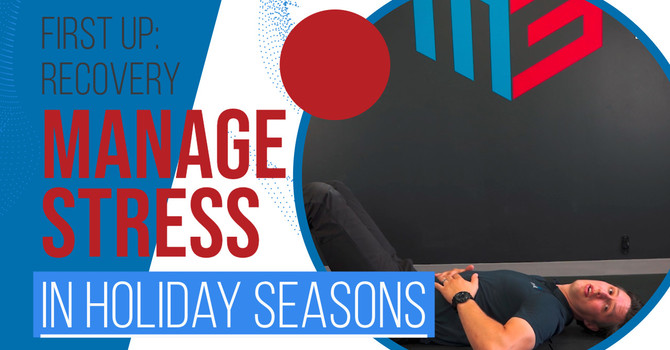.jpg)
When it comes to fitness, there are a multitude of training methods, each claiming to help you build a stronger, healthier body. However, if you want long-term progress and sustainable results, it’s essential to consider how each type of training builds on the others. At Movement Cube, we focus on a comprehensive approach that prioritizes mobility, strength, power, and cardio, with each "bucket" playing a crucial role in your fitness journey. In this post, we’ll explore why these four pillars are foundational to achieving a balanced, injury-free training routine.
The 4 Training Buckets at Movement Cube
At Movement Cube, we break training down into four key categories, or "buckets," each of which supports the next. Think of these buckets as building blocks—before you can focus on strength or power, mobility must come first. Here's a look at how we prioritize each pillar:
1. Mobility: The Foundation of Movement
Mobility is the cornerstone of any effective training program. You might be wondering, "Why is mobility so important? Isn’t it all about getting strong?" That’s a fair question, but imagine trying to lift a heavy weight overhead when you can't even raise your arms fully above your head without weight. Without a proper range of motion, you're setting yourself up for compromised positions, which can lead to injury.
Before you load up with weights, it's crucial to "own" your mobility. If you can't squat comfortably, perform basic stretches, to start opening up key ranges of motion, you shouldn't be thinking about increasing resistance. Mobility training ensures that you're moving safely and effectively, laying the groundwork for strength training and beyond. As you start to increase your mobility you can start to use a weight in the stretches to help drive that range further.
2. Strength: Building a Solid Base
Once you’ve established good mobility, the next step is strength. Strength training allows you to move through those ranges of motion while carrying loads. After you've developed the mobility to perform a squat or an overhead press, it’s time to add weight and build strength.
Why is strength so essential? Imagine you’re at home, bending down to pick something up when suddenly, your child jumps onto your back. If you haven’t built the necessary strength to handle that unexpected load, you could risk injury. Strength training doesn’t just build muscle; it prepares your body to manage the unexpected physical demands of daily life, from lifting groceries to carrying your kids.
3. Power: Strength Meets Speed
The third bucket is power, where strength meets speed. It's not enough to just lift a weight; sometimes you need to move it quickly, like in Olympic lifting or plyometric exercises. Power training enhances your ability to generate force rapidly. For example, you might be able to press a weight overhead, but can you catch it on your shoulders without injury?
Building power is crucial for more dynamic movements. Whether it’s throwing a weight, jumping, or catching yourself after a leap, power allows you to handle speed and load at the same time. Without power, strength alone isn't enough to prevent injury, especially in fast, reactive situations.
4. Cardio: The Final Piece
The fourth bucket might seem unconventional, as many people focus on cardio at the start of their fitness journey. But at Movement Cube, we place it last for a reason. Cardio training, particularly running, is a highly demanding activity that puts your body under significant stress. Think about the fact that running is a form of plyometric exercise that requires strength, power, and mobility to do safely all while you're starting to fatigue.
We believe you should build up strength and mobility before jumping into high-impact cardio activities like running. By preparing your body with strength and power training, you reduce the risk of injury when you eventually add running or other cardiovascular exercises to your routine.
Why This Approach Works: A Lower Risk of Injury
By following this structured approach—starting with mobility, moving to strength, then power, and finally cardio—you set yourself up for success. This framework ensures that you’re not only building each skill progressively but also lowering the risk of injury along the way. At Movement Cube, we combine our clinic and gym environments, allowing us to address any injuries while continuing to help you build a healthier, stronger body.
Conclusion: A Balanced Approach to Lifelong Fitness
Whether you're a beginner or an experienced athlete, training in a balanced, progressive way is key to achieving lasting results. By focusing on the four buckets—mobility, strength, power, and cardio—you build a solid foundation that supports your long-term health and fitness goals.
Ready to get started on your training journey? At Movement Cube, we’re here to guide you through each phase of your development, ensuring that you progress safely and effectively. Check out our gym page or give us a call to find out how we can help you move better, feel stronger, and prevent injuries for years to come.

Dwayne Golbek
Contact Me


.jpg)
